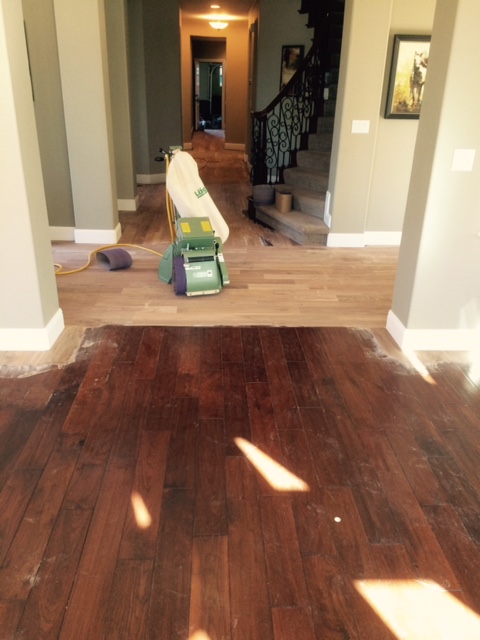Should I Use Engineered Wood Floors or Solid Wood Floors?
Let’s get the definition of these products straight before we discuss them. Why? Because some people refer to laminates as engineered and vice versa. A solid piece of wood floor means it is one piece of wood from top to bottom. An engineered product is made of core material and a top layer of wood veneer. The engineered hardwood floors were made for one reason: to perform in applications solid wood floors could not. Meaning, the construction of the product allows us to:
- glue it down to concrete slabs
- float it over any substrate
- nail it just like solid floors
The original engineered wood floors were made of a plywood core and a top veneer layer. The plywood which is made of wood, consists of layers of veneers with each layer perpendicular to the next. With wood movement in mind, the construction of the engineered floors created a product with superior stability. Years ago, we didn’t have the technology and products to glue down solid wood floors to concrete. Now we do. Although, in a very limited product selection it can be done. Nonetheless, solid wood floors cannot be floated under any circumstances. The idea that one product is better than the other is wrong. Each product has its pros and cons. For example, using solid floors means we use more wood to make the product. That means cutting more trees. Making engineered wood floors means we use chemicals, glues and resins in the process. That doesn’t sound like environmentally friendly, right? Solid wood floors can last more than a hundred years. After removal it can be recycled and re used. The life cycle of engineered wood floors is limited to the thickness of the wear layer. When engineered wood floors are removed they go to the land field. They cannot be burnt, recycled and/or re used.
Let’s take a look at the following table:
|
|
Solid wood floors
|
Engineered wood floors |
|
Nail down |
Yes |
Yes |
|
Float |
No |
Yes |
|
Glue down |
Limited products |
Yes |
|
Wear layer |
¼” for most floors |
From none to 3/16” |
|
Beveled edges |
No |
most |
|
Pre finished |
Yes |
Yes |
|
Unfinished |
Yes |
yes |
|
Price |
Varies supply/demand |
Varies between manufacturers |
|
Domestic and exotic wood |
Yes |
yes |
|
Contains adhesives/resins |
No |
Yes |
|
Off gassing from product itself (not finish) |
No |
yes |
The bottom line is this: whatever product you use, whether engineered or solid make sure it is the right application, environment and use for it. You can buy cheap solid floors or cheap engineered floors. The consequences are very different. With cheap solid floors you might get a bad looking floor. With cheap engineered wood floor you might have a delaminated floor that needs replacement. The topic is complicated and can be argued either way. In the end, it’s all up to you the consumer in deciding what is important to you when it comes to wood floors.



Leave a Reply
Want to join the discussion?Feel free to contribute!